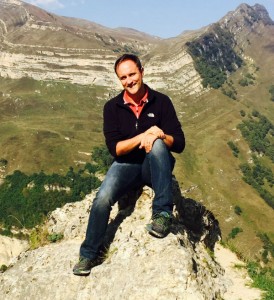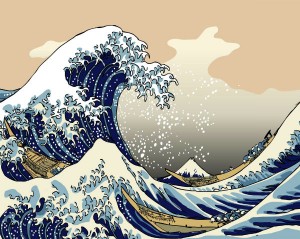![]()
Proudly telling the world about #generationIB in our 50th anniversary year
We interviewed Nicholas Palmer, a 2014 recipient of the Jeff Thompson Research Award for his study on the Primary Years Programme (PYP) exhibition and global citizenship education. He completed the research as part of a dissertation proposal for his graduate studies at the Charles Sturt University in Australia. Nick is currently the primary mathematics coordinator and the grade 5 team leader at the International School of Azerbaijan (TISA).
What inspired you to conduct a study on global citizenship education in the PYP?
A conversation that I had with my colleague Alex Gardener-McTaggart at TISA triggered my decision to study Global Citizenship Education (GCED). He was in the early phases of his PhD literature review and noticed how frequently the topic of GCED was coming up. As I was embarking on my doctoral studies, I was searching for a topic to latch onto. I did some reading about the idea and it began to dawn on me that, with the help of scholars in this field (Tully, Andreotti, Cambridge, Bates, Cambridge, Reimers to name a few), not only would it be a worthwhile topic to explore but it was also closely connected to what we were doing to enhance the PYP exhibition at TISA. The exhibition has an important role to play in demonstrating some of the key aspects of GCED, not least of all, taking a stance on global issues and seeking out authentic modes of communicative action.
Was there anything that surprised you about the types of projects your students chose to engage with?
I think the best PYP exhibitions have a sense of adventure, variety and inclusivity. I’ll give you some examples of my students’ work. One of the students was especially attracted to the idea of brain science and tapping into the hidden powers of the mind. His thinking and research led him to focus on recovery from disability. He visited centres for persons with disabilities and these experiences, naturally, had a profound effect on him. The tone of his project changed and became increasingly focused on how people overcome adversity.
Another student developed her inquiry on tsunamis while she was on holiday in Thailand and interviewed survivors of the 2004 tragedy. When she began preparing for the presentation she constructed this giant replica of the famous Japanese painting The Great Wave of Kanagawa. Initially, this replica concerned us as it took her a very long time to complete, but once she started referring to it as a metaphor for the peaks and troughs of disaster recovery people paid attention. She used the painting as the centerpiece for her documentation, emphasizing how people seek to recover and even flourish. The students that stunned us with their public speaking prowess on that night were among those that had been reluctant to present on previous occasions. Other surprises surfaced with the pairings of students who were not especially friendly all year but aligned their interests for presentations.
What are the top three lessons that you learned from conducting this study?
I learned that coding and analysis of qualitative data takes a very, very long time. I also became further convinced that GCED (or its cousins: global education, cosmopolitanism, etc.) are especially salient topics in a 21st century teaching model. Lastly, I also learned how the practical implementation of GCED is not only a foundation for innovation but may also have an impact on the very definition of global citizenship in the years to come. IB schools are at the forefront of GCED invention, and I’m encouraging schools to embrace it.
What do you think PYP schools can do to make the PYP exhibition more engaging and impactful for students?
Two of the themes that were consistently present in the data were documenting and substantiating. If schools start planting the ideas for the exhibition early, and document it using multiple communicative platforms, not only will ideas have time to germinate but they also provide for potential connections to other schools and communities. This can transform our traditional definition of a learning community. Next year at TISA we aim to plant a GCED seed at the beginning of the year and build on that thread throughout the subsequent units.
The next application deadline for up to US$15,000 of research funding via the Jeff Thompson Research Award is 31 January 2016. Find the application form, plus policy and procedures, here. If you have any questions, feel free to contact IB Global Research at research@ibo.org.


